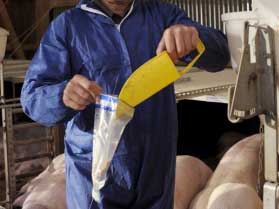Mycotoxin contamination of feed supply chain – serious problem

In a special issue entitled ‘Nutrition and Pathology of Non-Ruminants’, of the Journal of Animal Feed Science & Technology Wayne Briden (University of Queensland, Australia) discusses the subject: Mycotoxin contamination of the feed supply chain: Implications for animal productivity and feed security.
Fungi are ubiquitous and formation of mycotoxins can occur in all agricultural commodities under appropriate field or storage conditions throughout the animal feed supply chain.
In this increasingly complex area, the salient features of a fungal growth and mycotoxin production are outlined with strategies to mitigate their accumulation.
Overall, there are a number of approaches that can be taken to minimise mycotoxin contamination in animal feeds and these involve prevention of fungal growth and therefore mycotoxin formation, and strategies to reduce or eliminate mycotoxins from contaminated commodities, especially feed additives.
The major problem associated with mycotoxin contaminated animal feed is not acute disease episodes but low level toxin ingestion which may cause an array of metabolic disturbances resulting in poor animal productivity.
In studies with pigs and poultry it has been shown that low level mycotoxin intake can result in reduced feed intake, poor growth rate, lower egg production, changes in carcass quality, reduced fertility and hatchability of eggs and immunosuppression.
Bryden concludes that mycotoxins constitute a significant problem for the animal feed industry and an ongoing risk to feed supply security.











